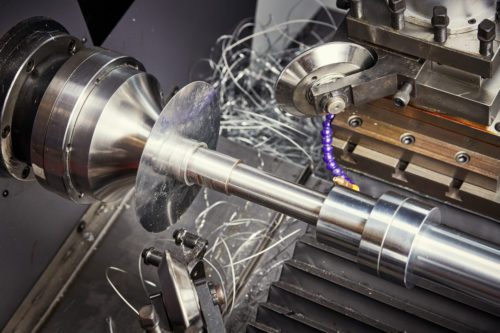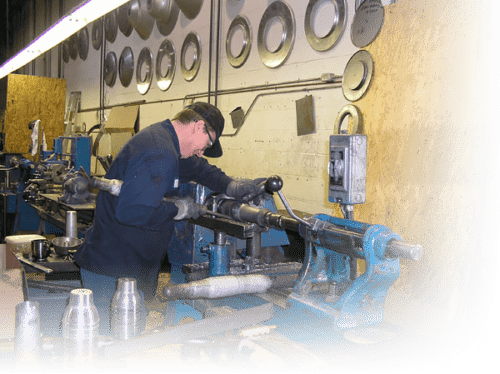Metal spinning is a rimless metalworking technique that stretches back from the era of artisans and craftsmen in the past to today’s mass manufacturers. While techniques in the past were forged in manual work, modern processes use a combination of both hand spinning and processes governed by CNC machinery. By rotating a metal workpiece at high speeds around a fixed axis, metal-spinning tools can cut and shape the metal into an axially symmetrical product. In mass manufacturing, the first stages of metal spinning are completed by automated machines before being finished by hand. This process is popular across multiple different industries.
In this guide, learn more about the similarities, differences, and applications of both hand spinning and CNC spinning processes.
Hand Spinning vs. CNC Spinning: Similarities
 Both hand and CNC spinning operate off of the same basic principles. They transform workpieces of metal into a range of shapes, such as tubes, bell-shaped parts, and spherical components along a fixed axis of symmetry. Both processes are also fast, which make them especially advantageous for creating prototypes.
Both hand and CNC spinning operate off of the same basic principles. They transform workpieces of metal into a range of shapes, such as tubes, bell-shaped parts, and spherical components along a fixed axis of symmetry. Both processes are also fast, which make them especially advantageous for creating prototypes.
In fact, spinning is one of the fastest processes for forming metal goods; other popular processes such as metal stamping can’t keep up. This increases the efficiency of spinning-based production processes, as does the minimal amount of waste the process creates.
Hand Spinning vs. CNC Spinning: Differences
 Hand and CNC-spinning processes do have some crucial differences that you can use to determine which is the right fit for your next project.
Hand and CNC-spinning processes do have some crucial differences that you can use to determine which is the right fit for your next project.
Hand spinning is a much more manual process than its modern CNC alternative. The technician controls the spinning speed while operating forming forces to produce the final shape. This allows for fine-tuned control and artistry. It’s also more cost-effective for the production of prototypes, unique pieces, and small-volume orders.
Because hand operators exert less force on the metal, it also tends to be used with fragile or ductile metal that need a more delicate touch like O-tempered aluminum and some stainless steels. It’s also the preferred choice for precious and semi-precious metals.
CNC-metal spinning, on the other hand, is controlled predominantly by automated CNC machinery. These machines interpret instructions from a design file and follow those strict steps to create virtually identical part after part. The machinery controls hydraulic presses that force the metal workpiece into shape, and it determines how long the hydraulics are engaged and how fast the workpiece spins. It offers complete accuracy in a way manually controlled processes can’t guarantee.
Because of this consistency, CNC spinning is the preferred choice for manufacturing products that need high volumes of identical parts within strict tolerances. CNC machinery can also exert more force through the hydraulic presses, making it a superior choice for hard materials that are difficult to form. However, it can also handle metals with >2% ductility.
Hand Spinning vs. CNC Spinning: Applications
Hand-spinning processes commonly form these products:
- Beverage can prototypes
- Satellite parts
- Aircraft parts
- Semiconductor manufacturing equipment parts
- Antennas
CNC spinning processes are used to form large volumes of high-precision products in these industries:
- Aerospace
- Automotive
- Clothing
- Food and beverage
- Healthcare
- Military components
- Mining
Contact Us at Metal Craft S&S for High-Quality Metal Spinning
Both hand spinning and CNC spinning processes can craft high-quality metal products across multiple different industries. At Metal Craft S&S, we offer hand spinning and CNC spinning services. Contact us today to learn more about our capabilities or request a quote for pricing details.


